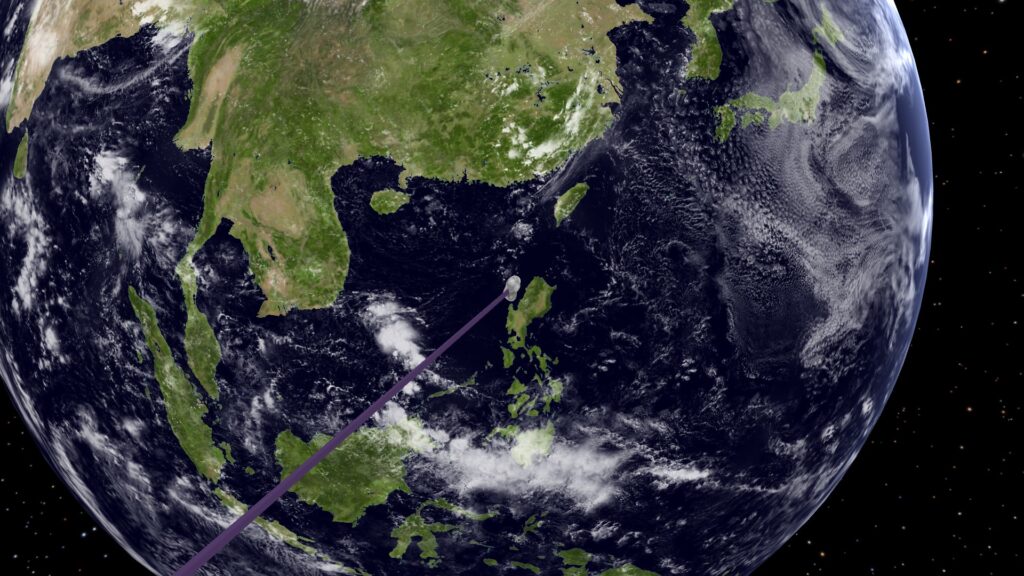In the previous video, you learned about the asteroid Bennu and its orbit. You also saw how its next approaches to the Earth will take place: in 2054 and 2060. Bennu will be approaching the Earth after 2060. But the information about each subsequent approach will be less and less accurate. We can only talk about the probability of Bennu approach with our planet in the next century, in one year or another. Why is it impossible to say for sure whether Bennu will collide with Earth in the next century? Why is it only possible to estimate the probability of a collision? How can this probability be estimated? In this video I will try to give answers to these questions.
Everyone knows that any measurements are carried out with some error. The parameters of the orbit of the asteroid Bennu are known with a huge degree of accuracy. The orbital elements were refined during the OSIRIS-REx mission, which turned out to be extremely successful. Otherwise, scientists would not have been able to collect samples from the asteroid Bennu and deliver it to Earth. Now the error in determining the coordinates of Bennu is only a few tens of meters. Just think about it: the position of an object located tens of millions of kilometers away from us is known with an accuracy of several tens of meters!
Throughout the video, the motion of not one asteroid, but a whole beam of Bennu asteroids is shown. The beam consists of nine points. The position of the central point is calculated using the known parameters of the Bennu orbit. The positions of the other eight points are also calculated using the parameters of the Bennu orbit, but changed within the margin of error. For the formation of the beam points only the value of the major semi-axis of the asteroid Bennu changed within the margin of error. Changes in the remaining Bennu orbital elements lead to less significant deviations in the trajectories beam.
Initially, the distance between the extreme points of the beam was about 60 meters, which corresponds to the error of the known coordinates of Bennu. After the approach of 2054, the distance between the extreme points will increase to several kilometers. And after the approach of 2060, the beam will expand to several hundred kilometers. The beam of trajectories expands because the gravity of the Earth more strongly deflects the trajectory of the point of the beam that is closer to the Earth. And the wider the beam becomes, the stronger the difference between the forces with which the Earth acts on different points of the beam during the approaches.
The distance between the extreme points of the beam by the year 2120, thanks to all previous approaches, will increase to a million kilometers. Thus, the initial uncertainty of the Bennu coordinates of only 60 meters leads to an uncertainty of a million kilometers over a century. It’s all the fault of the asteroid close approaches to the Earth, each of which leads to an increase in the error by about two orders of magnitude. For planets that do not approach each other, uncertainty in coordinates accumulates much more slowly.
According to authoritative sources, after the approaches of Bennu with the Earth, which took place in 2054, 2060 and 2080, the next one will take place in 2135. According to my data, the approach will take place in 2144, but I do not take into account, for example, such non-gravitational effects as the Yarkovsky effect in my calculations. I have no goal to compete with famous scientists in the accuracy of calculations. The purpose of this video is to demonstrate how you can estimate the probability of an asteroid collision with the Earth.
For this video, calculations were performed for nine possible positions of the asteroid Bennu within the margin of error. For the calculation, you can take much more possible positions, changing not only the value of the major semi-axis, but also the values of the other orbital elements. The scientific value of such a study would be higher. But the video, most likely, would have turned out to be less visual and very difficult to perceive. In addition, to visualize such a large number of trajectories would require very large computing power.
According to my data, in 2144 the asteroid Bennu will again pass at a safe distance from Earth. The expanded beam of possible trajectories will also completely pass by the Earth. After this approach, the beam will gradually expand to 10 million km and continue to expand.
The expanding beam of possible trajectories of Bennu demonstrates the growing uncertainty of the future fate of this asteroid and our planet. The uncertainty will decrease significantly after the orbit of Bennu will be clarified after its approaches with Earth in 2054 and 2060. If it turns out that Bennu still has to collide with the Earth in the next century, it will be necessary to take measures to prevent a catastrophe.
There is a successful experience of changing the trajectory of one of the asteroids as part of the DART space mission. There are also many other interesting and promising projects that offer various ways to deflect an asteroid from a hazardous trajectory. For example, it is possible to produce a nuclear explosion near the surface of an asteroid, which will result in the release of matter from the asteroid. The asteroid itself will deviate in the direction opposite to the direction of the ejected substance. Another option involves installing rocket engines on the asteroid, which will create the necessary thrust and take the asteroid away from a hazardous trajectory.
More exotic methods are also proposed. For example, it is proposed to wrap an asteroid in foil with high reflectivity. You can also spray a white substance (titanium dioxide) over the asteroid or sprinkle on it, on the contrary, a black substance (soot). In each of these cases, there will be a change in the reflectivity of the asteroid. This will lead to the appearance of the Yarkovsky effect and a gradual deviation of the asteroid trajectory.
By 2170, the beam of possible Bennu trajectories will expand to 50 million km. And at the next approach to the Earth, our planet will pass through this beam. According to my calculations, this will happen in 2171. This means that it is possible to choose such a value of the major semi-axis of the Bennu orbit within the margin of error at which the asteroid would collide with the Earth. There is a probability that the major semi-axis of Bennu orbit really has such a value, because it is within the margin of error.
The probability of a Bennu collision with the Earth can be estimated as follows. Let’s say we split the beam not into 9 points, but into 1000 points, and found out that 10 of them will touch the Earth’s surface in 2171. So, the probability of a fall can be roughly estimated as ¹⁰/₁₀₀₀ or 1%. For a more accurate estimate, you can take even more split points, change not only the major semi-axis, but also other elements of the orbit. Also, when assessing the probability, it should be taken into account that the possible values of the orbital elements within the error have a normal distribution.
Modeling and rendering were performed by author of AstroTubo channel using own software. The calculations took into account the mutual influence of the Sun, all the planets of the Solar System, the Moon and the asteroid on each other. Relativistic effects were also taken into account in the calculation.
The track Omega by Koi-discovery sounds in this video. This track was not changed. CC0 1.0 Universal (CC0 1.0) Public Domain Dedication license.





